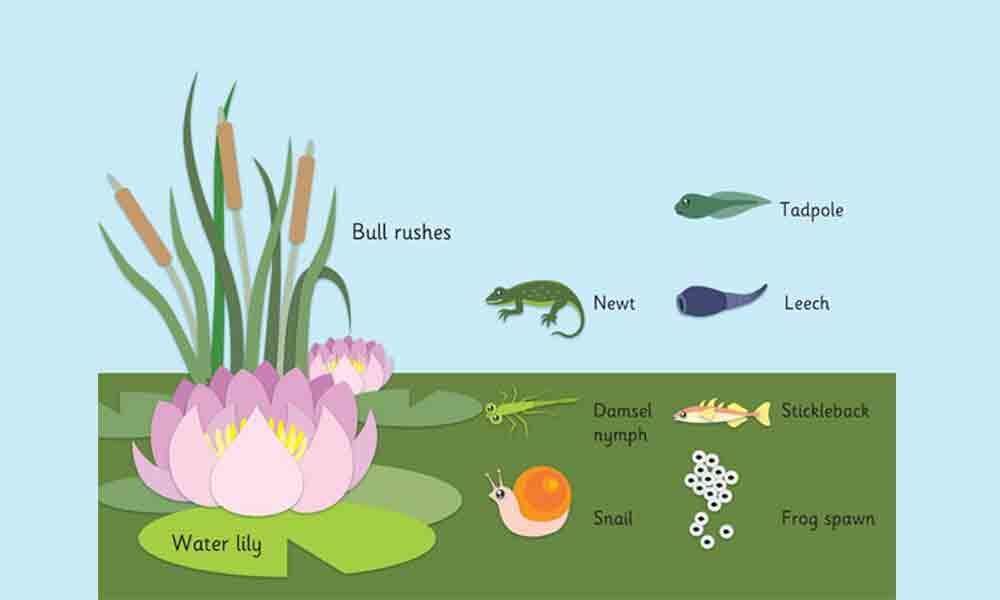Learn about pond life

Pond is a body of water that is not connected to flowing water, like a stream or a river. Most ponds are much smaller than lakes and are not as deep.
Pond is a body of water that is not connected to flowing water, like a stream or a river. Most ponds are much smaller than lakes and are not as deep. They are usually shallow enough that you can see the bottom – but sometimes the water is too dark to see into! The bottom of ponds are usually made of mud and a few rocks. Most ponds are formed naturally, but there are also a lot of beautiful ponds that have been made by humans in gardens and yards.
A pond is a habitat, or home, for many different kinds of animals and plants. A habitat must provide food, water, shelter, and space for the animals that live in it. For example, a pond is a good habitat for a tadpole: it has algae to eat (food), the water is just the right temperature and it provides plenty of oxygen for the tadpole to breathe (water), it can hide in the plants (shelter), and it has lots of room to swim around and grow (space).
Have you ever visited a pond? Do you remember anything special that you saw there? You probably saw lots of different types of life at the pond! Just like the seashore, lake, and other bodies of water, ponds have lots of plants and animals living in and around them – from insects and frogs to birds and lily pads. To learn more about animal homes, check out this science lesson.
Fun facts: The water scavenger beetle is also called the great diving beetle, because it will dive into the mud at the bottom of a pond for protection from being eaten by fish or other pond animals! Snails help keep ponds clean by eating algae that grows on plants and rocks in the water.
Dragonflies are nice to have around because they like to eat mosquitoes, gnats, flies, and other pesky insects. They like ponds because they can find plenty of those insects to eat near a pond.







